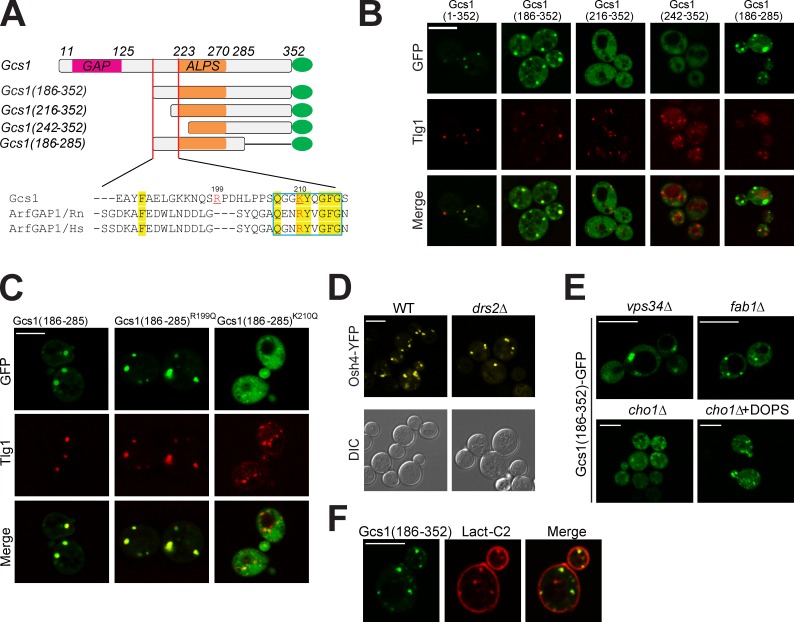Figure 2.
Gcs1 TGN/EE localization requires its +ALPS motif. (A) Diagram of truncated Gcs1-tagged GFP. The positive charged resides Lysine at position 210 and Arginine at position 199 are highlighted in red. Conserved sequences between Gcs1 and mammalian ArfGAP1 are highlighted in yellow. (B) Besides the ALPS motif, a conserved region between the GAP domain and ALPS motif (residues 186–223) is required for Gcs1 TGN/EE localization. Truncated Gcs1-tagged GFP expressed in wild-type (WT) cells and imaged relative to mCherry-Tlg1. (C) Mutation of K210 in Gcs1 disrupts TGN/EE localization. GFP-tagged Gcs1(186–285), Gcs1(186–285)R199Q, and Gcs1(186–285)K210Q expressed in WT cells and imaged relative to mCherry-Tlg1. (D) Osh4-YFP localization in WT and drs2Δ cells. (E) Gcs1(186–352)-GFP localization in mutants deficient for endosomal anionic lipids including PI3P (vps34Δ), PI(3,5)P2 (fab1Δ), and PS (cho1Δ). An aliquot of the cho1Δ cells was incubated with 1 µM DOPS/0.001% NP-40 mixed micelles for 1 h (cho1Δ+DOPS). (F) Gcs1(186–352)-GFP colocalized to the punctae with the PS biosensor mRFP-Lact-C2. Bars, 5 µm.

